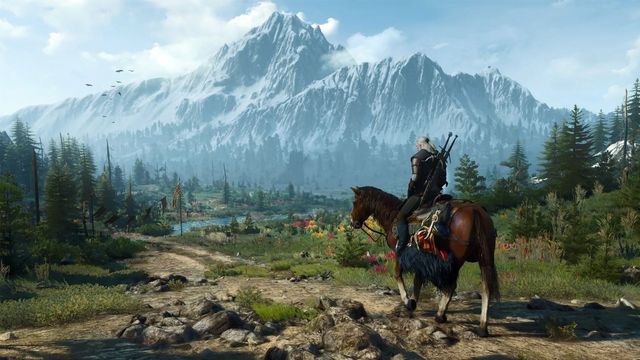However, if you have played before and the new version of the game prompts you to consider playing again, I have some advice. You should start the new game with “Death March” at the highest difficulty level.
First, let me make something clear. This is not about game masochism, bragging rights, or elitist arm-twisting; with the exception of games like “Diablo,” where the increasing difficulty is built into the very core of the design, I am usually the last person to tackle greater difficulties in games. This is because I am not very good at it, and my life is short.
Instead, the reason I’m pushing for the “Death March” difficulty in The Witcher 3 is that this setting enriches not only the fiction of The Witcher itself but also the gameplay system of the game. It accompanies the game’s greatest strengths and even corrects its shortcomings.
Also, the difficulty level is not so high. As is the case with many games, the highest difficulty setting is, paradoxically, the most difficult right at the start of the game, before you level up the Witcher’s hero, Geralt of Rivia, and acquire some skills and recipes that give you a decisive advantage in defense, recovery, and combat utility. In particular, the initial fight with the level 1 ghoul hordes is formidable and unpleasant. (This is one of the reasons I would not recommend this game to someone new to the game. New or unfamiliar players may want to consider raising it gradually over the course of play.) However, once you have the rudimentary monster-hunting tools, “Death March” becomes more of a test of patience and composure than a test of skill, which is typical of From Software’s games.
Witcher’s 3 Few Weaknesses

It also encourages a bit of theorizing; one of The Witcher 3’s few weaknesses is its engaging but unfocused role-playing system, which, coupled with the less-than-sharp combat, makes the impact of character building and the powerful, status-changing involvement with a decoction an underrated factor. But “Death March” is different. Since even ordinary enemies can significantly chip away at Geralt’s health bar, and since there is no health recovery outside of combat other than eating, finding ways to improve Geralt’s survivability and maximize his resources is paramount.
Signs (magic) and potion-focused builds also become more appealing, and decoctions suddenly make a big difference, and the risk/reward balance of undertaking their high toxicity suddenly makes sense. (Geralt’s bloodstream can withstand a lot of toxicity, and a strong decoction can push him closer to his limit, making him less able to use important healing potions. (The high-toxicity alchemy build is one of the fun ways to play Death March.)
In combat, he must back off, break his rhythm, watch his prey’s movements closely, use Geralt’s dodging techniques, and attack cautiously and boldly. To gain the upper hand, especially.